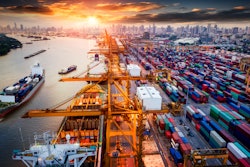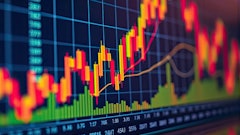
The world has been grappling with supply chain disruptions that have limited the availability of just about anything produced or manufactured since the start of the pandemic. The Coronavirus disease (COVID-19) has demonstrated just how volatile supply and demand can be, as this unexpected global event has set off a chain reaction. At the moment, it’s taking about 80 days to ship goods across the Pacific, double the time it took pre-pandemic. Supply shortages result in more supply shortages, with manufacturers experiencing limited access to necessary materials, slowing or halting their own production as well. With COVID-19, hurricanes and wildfires making daily headlines, unanticipated crises feel commonplace these days. These constant disturbances call for us to reflect and recognize what works and what doesn’t across our supply chain model.
The COVID-19 pandemic is an example of how it’s impossible to plan for every potential catastrophic event, but it also teaches the importance of truly preparing for the unexpected. The growing rate of supply chain effects stemming from extreme weather events can and must be well prepared for. In recent months alone, the planet has faced destructive rainfall, raging wildfires, heat waves and deadly droughts. Rising sea surface temperatures are causing increasing rates of hurricanes and typhoons, impacting global shipping routes. Now in the winter months, current shipping bottlenecks will be further exacerbated by rough weather and rising fuel costs. This extreme weather creates additional visibility challenges, volatile seas and larger waves.
The rising frequency of these events is fueling a spike in weather-related concern across organizations. Companies are becoming increasingly impacted by the unpredictability of weather, as these extreme occurrences effect their typical supply and demand by impacting what consumers choose to wear, eat and do.
The latest UN Global Compact-Accenture Report showed that nearly half of CEOs surveyed globally are grappling with supply chain interruptions due to extreme weather events. Additionally, most businesses claimed they feel unprepared to protect the stability of their operations from climate-related risks with their current levels of investment. These widespread concerns signify the need for the immediate implementation of a weatherized supply chain model.
Though weather is often considered as entirely out of control, it’s possible for organizations to react to real-time weather-based shifts and handle extreme weather impacts with flexibility. Technology allows supply chain operators to create a weatherized model to help avoid unexpected disruptions caused by extreme weather events. Such a model allows for companies to shift their focus into forward looking timeframes and prepare for volatile weather.
So, how weather-based supply chain model work?
When building out a weatherized supply chain model, it’s essential to recognize that weather’s demand impacts repeat year-to-year only 20% of the time. Therefore, in order to establish an accurate weather-based model, organizations require insight into historic sales information to successfully determine how the weather may operate in set locations, during set time periods.
This is where predictive weather analytics comes into play. Weather-driven demand varies based on season, industry and product – ultimately affecting production, sales and methods of purchase. Weather analytic technology creates an initial analysis that provides companies tailored insight into the weather impacts facing their operational processes. It gives companies visibility into upcoming weather insights, highlighting when unfavorable conditions will present challenges or effect customer purchasing behavior. It’s critical for organizations to first understand how customers react to unexpected events in order to determine how their buying patterns may be affected through extreme weather.
The technology also goes beyond this by illuminating perspectives in customer behavior based on habitual reactions to their specific location. This is essential to the creation of a successful model, as individuals in the Northeast will likely continue life as usual throughout a light snowstorm, while those in the South will react differently. Without understanding localized insights, it’s impossible to determine buying behaviors and accomplish proactive future planning.
Predictive weather analytics translates temperature readings and precipitation forecasts into actionable business metrics, offering real-time assessments that organizations can utilize for their current operational plans and reporting. This information enables a pharmacy, for example, to make rapid replenishment adjustments several times a week based on predicted customer reaction to weather. Weather analytics can predict an unexpected fluke of hot weather in early fall, allowing the pharmacy to ensure the stocked shelves of over-the-counter medications, ultimately increasing product sales and avoiding customer disappointment.
As extreme weather events continue to grow in frequency and volatility, it will become even more challenging for companies to maintain their inventories and operations and plan for the future. Luckily, the insight and real-time data provided through a weatherized supply chain enables flexibility and easy problem resolution, setting organizations up for greater success as they attempt to navigate climate change-driven unpredictability.

![Pros To Know 2026 [color]](https://img.sdcexec.com/mindful/acbm/workspaces/default/uploads/2025/08/prostoknow-2026-color.mduFvhpgMk.png?auto=format%2Ccompress&bg=fff&fill-color=fff&fit=fill&h=100&q=70&w=100)







![Pros To Know 2026 [color]](https://img.sdcexec.com/mindful/acbm/workspaces/default/uploads/2025/08/prostoknow-2026-color.mduFvhpgMk.png?ar=16%3A9&auto=format%2Ccompress&bg=fff&fill-color=fff&fit=fill&h=135&q=70&w=240)








